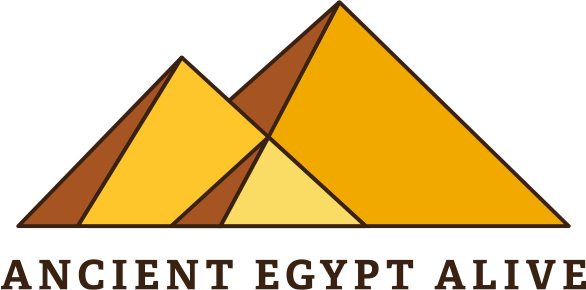Sorting out the three museums in Cairo
by Laura Ranieri Roy
It seems every week there’s news about another museum in Cairo Egypt. From the iconic Egyptian Museum in Tahrir, that magnificent 1902 “antiquities warehouse”, where the Royal Mummies began their great procession two weeks ago… to The National Museum of Egyptian Civilization, that stunning new edifice lakeside in Fustat, where the mummies have made their new forever home. And of course, the much-anticipated Grand Egyptian Museum – the greatest archaeological museum the world has ever seen – coming to the Giza Plateau, in sha allah, by end of 2021.
But what will each of these museums hold? Will they ALL be worth seeing? How do you differentiate between them?
Let’s make a quick review of their stories, their evolution and the dazzling collections now coming together in different areas of Cairo.
1. The Egyptian Museum in Tahrir Square
The Oldest Archaeological Museum in the Middle East

Egyptian Museum Tahrir 2013 Laura Ranieri Roy
Located in the heart of Tahrir Square, Cairo, the Egyptian Museum is a beautiful beaux art building designed over a century ago to host the world’s oldest collection of Pharaonic art and monuments. Spanning 13,600 sq. meters, with more than 100 exhibition halls, the museum opened its doors in 1902 – though its cornerstone was laid in 1897 – and became the first national museum in the Middle East.
For now, it remains the museum with the largest ancient Egyptian collection in the world, a flagship of museums for the study, research, conservation, and exhibition practices related to ancient Egypt. The Museum displays an extensive collection spanning from prehistory up to the Graeco-Roman period. It will be superseded this year, however, when the massive GEM in Giza opens its doors.
While great world museums such as the Louvre Museum, the British Museum were housed/located within historic palaces and buildings, the Egyptian Museum was uniquely “purpose built — designed specifically as a museum to house a large collection of ancient Egyptian artifacts. It was the first in the Middle East and North Africa to be built this way, and certainly the earliest one dedicated entirely to the ancient Egyptian civilization.
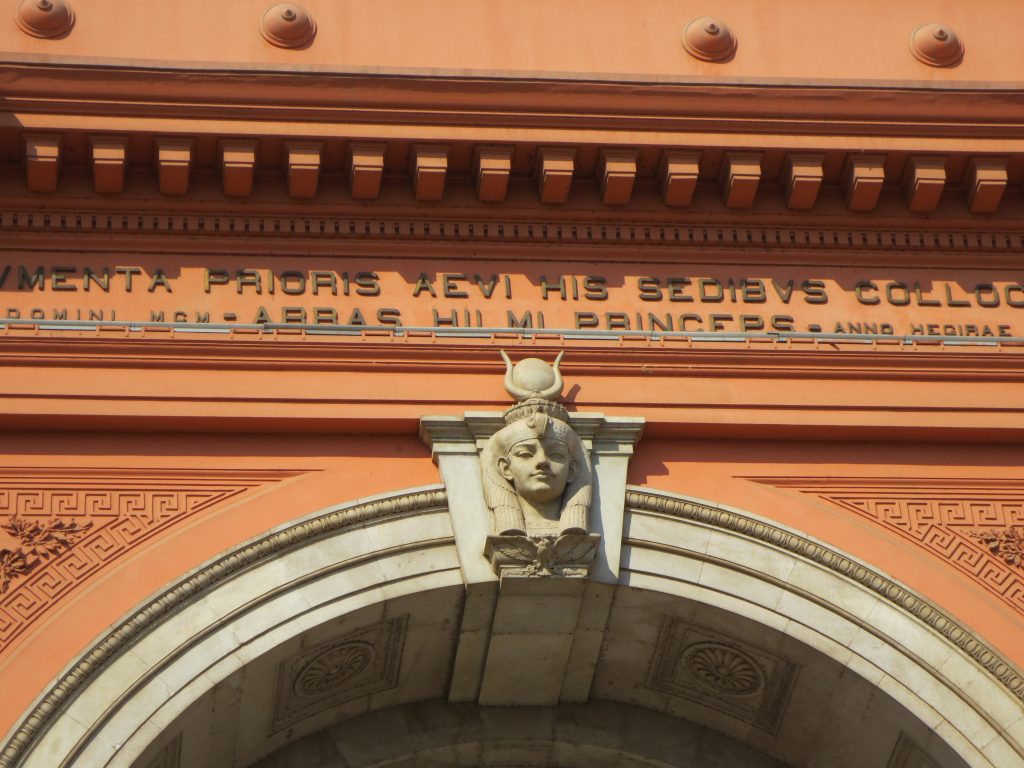
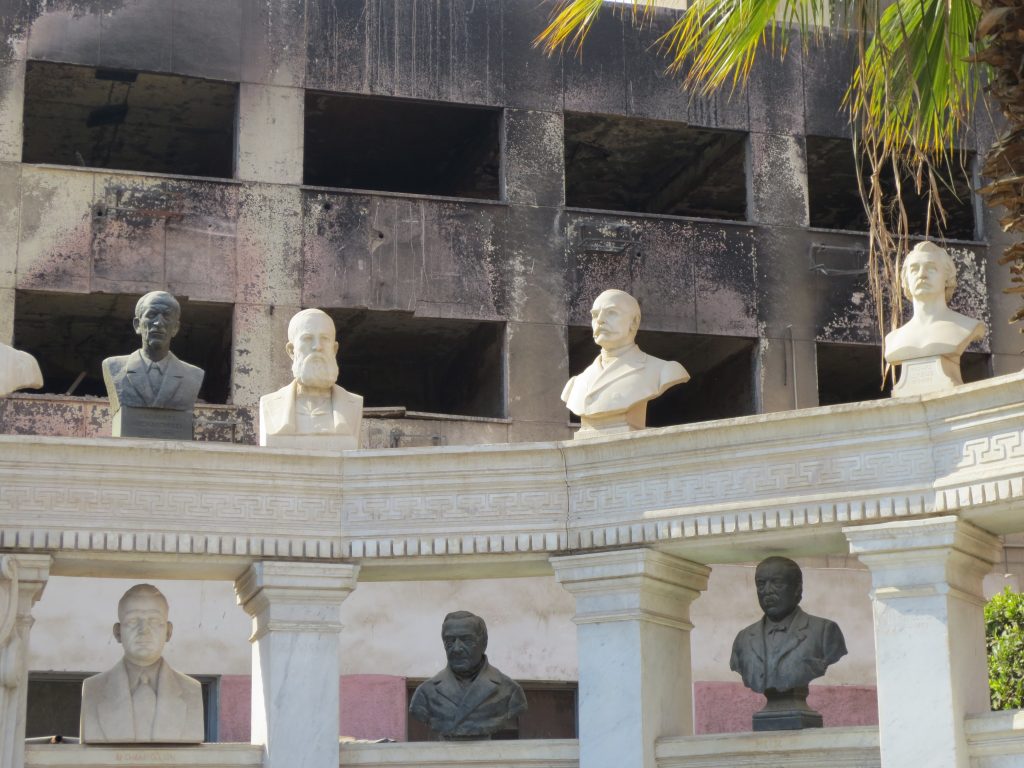
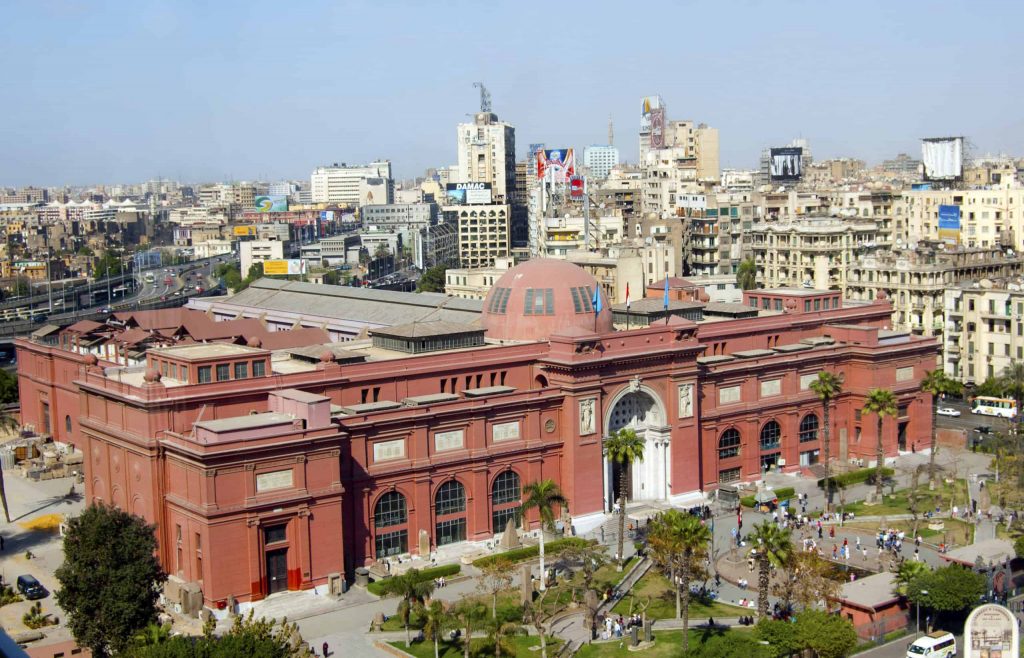
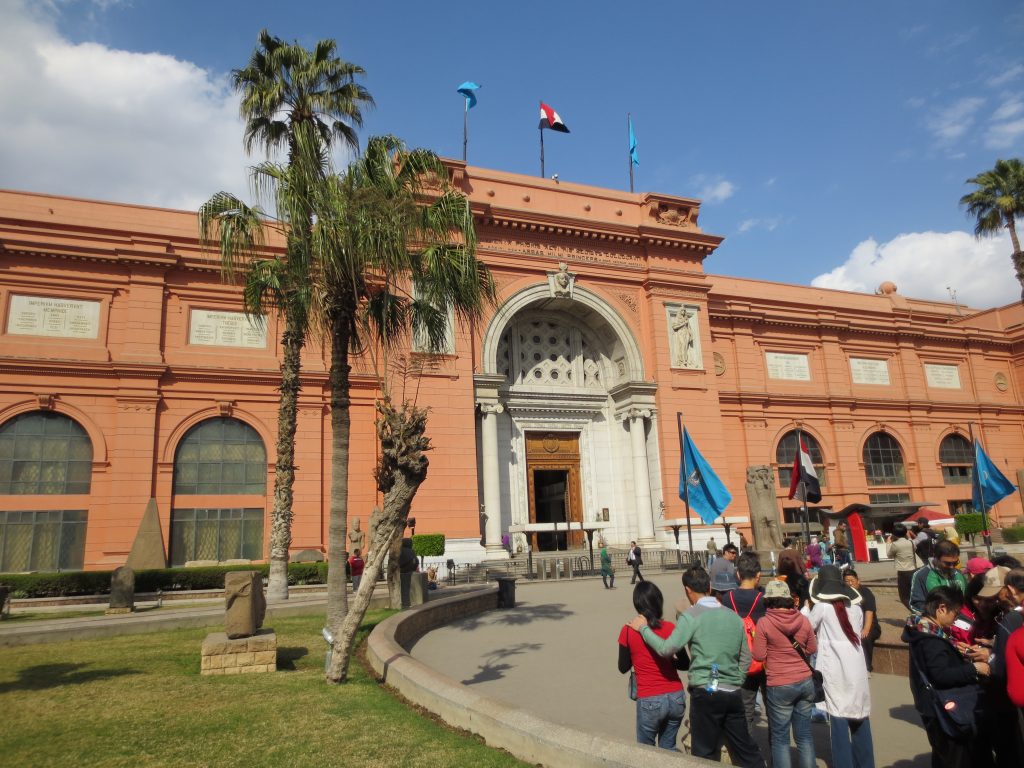
entance to Egyptian museum c) Laura Ranieri Roy 2013
Designed by French Architect Marcel Dourgnon (who won the architecture competition around its construction in 1895) in a Beaux Arts, neo-classical design. The façade includes images of Egyptian goddesses, yet they are executed in the late classical Greek style. The inscriptions on the marble panels are in Latin, which most Egyptians could not read, and for a long time, the only busts that were included adjacent to the sarcophagus of Mariette were those of European Egyptologists.
Formerly home for Tut’s Treasures & the Royal Mummies – plus 100s of thousands of artifacts.As of 2021, The Museum is undergoing a significant transformation. Once the home of the great royal mummies and Tutankhamun’s treasures, all this is changing.
In April 2021, 22 royal mummies made a lavish procession from their home of 120 some years to The National Museum of Egyptian Civilization, (NMEC) a beautiful new building in Fustat.The great Tutankhamun collection historically displayed on the second floor has also left the building – now transported to its new home in the shadow of the pyramids at Giza: The Grand Egyptian Museum (GEM).

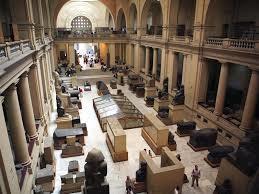

Future plan: A historic museum of masterpieces
Recently designated a UNESCO heritage site, big plans are afoot that are transforming this historic museum from warehouse to a beautiful museum of masterpieces.
While previously bursting at the seams, with antiquities sprawling everywhere, some with yellowing cards, some without – and some just laying neglected against the walls – or in some lost crate in the basement, order is coming to this gem of a museum.
With more space for artful display, the beauty of some of the best pieces will be allowed to shine.
Museum Highlights:
From Thuya and Yuya’s Treasures and Tanis Silver… to the Menkaure triad
Visitors to this museum will be able to appreciate some of the most stunning and significant pieces of Egyptian art.
Among the museum’s unrivaled collection will remain the complete burials of Yuya and Thuya,, Psusennes I and the treasures of Tanis, and the Narmer Palette commemorating the unification of Upper and Lower Egypt under one king (one of Egypt;s most iconic artifacts).
The museum will also still house the splendid statues of the great kings Khufu, Khafre, and Menkaure, the builders of the pyramids at the Giza plateau. An extensive collection of papyri, sarcophagi and jewelry, among other masterpieces.
The great triad of Menkaure
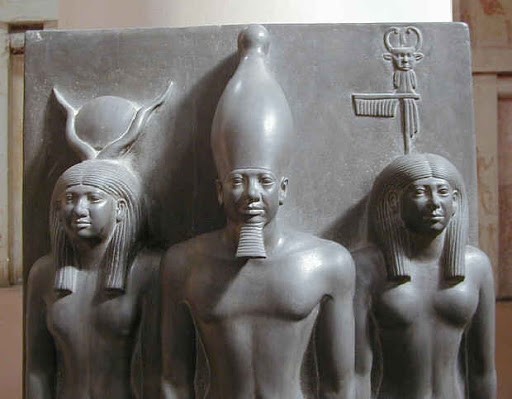
Treasures of Thuya and Yuya, Tut’s grandparents
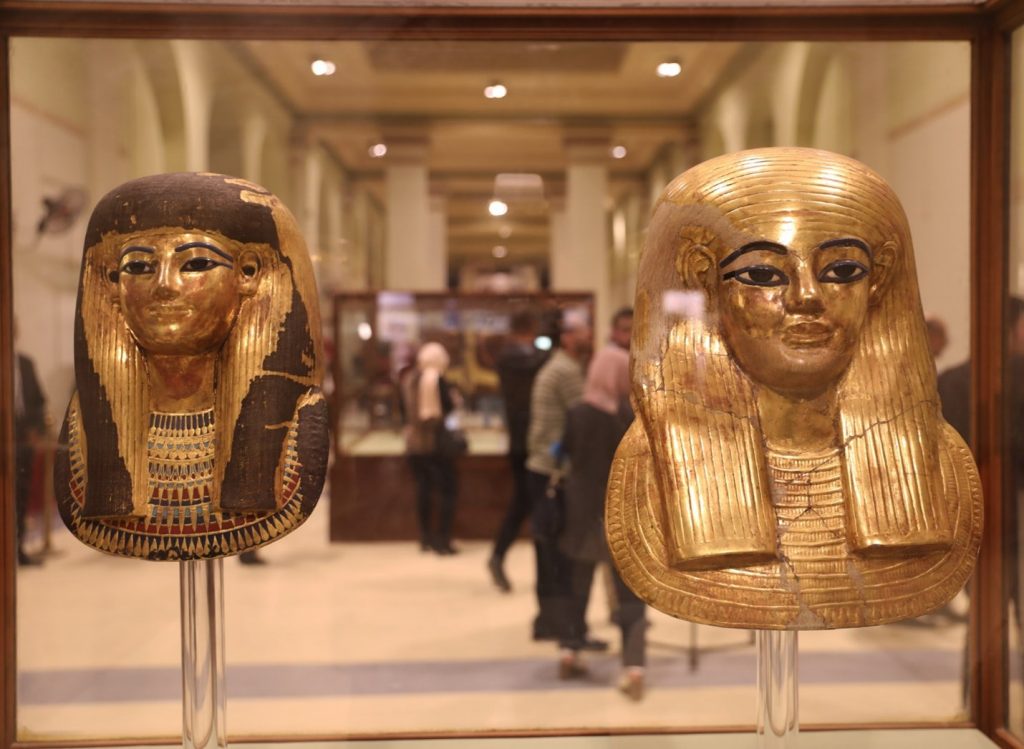

Silver and Gold Treasures of Tanis


2. National Museum of Egyptian Civilization
A celebration of Egypt’s great achievements – through arts and crafts, ancient and modern.
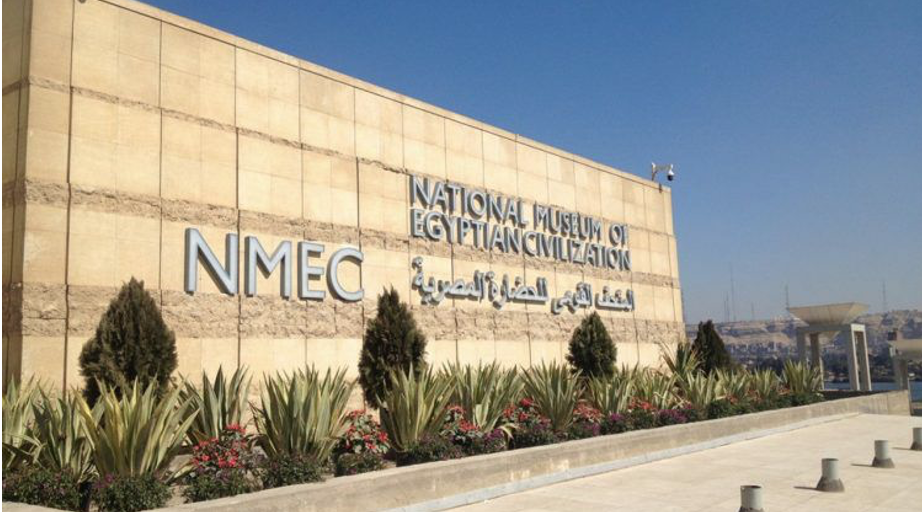
Officially opening its doors April 3, 2021 (with the arrival of the royal mummies) The National Museum of Egyptian Civilization (NMEC) is the first museum in the Arab world focusing on the development of Egyptian civilization over time.
The collection artfully covers the interaction of the Egyptian people with their land throughout history, tracing the advent of crafts, sports, weaving, and more – from predynastic and Pharaonic all the way through Roman and Coptic right through to modern Egypt.
The thematic areas will be: Dawn of civilization, the Nile river , the advent of writing, state and society, material culture, and Egyptian beliefs and thinking.
Situated in Cairo’s oldest district: Fustat
Located in Fustat, the first Egyptian capital after the Arab conquest in 642, the NMEC is symbolically situated at the crossroads of Egyptian history. Fustat is the area where tourists come to visit many Coptic churches and monasteries, the Coptic Museum, the Ibn Ezra Temple, and the first mosque in Egypt, the Amr Ibn Al-Aas Mosque. The Citadel of Saladin rises on high in the distance, visible from the museum’s outdoor spaces, designed to emphasize the unique location overlooking Lake Ain El-Sira, the last natural lake in Cairo. A significant location for this museum indeed.
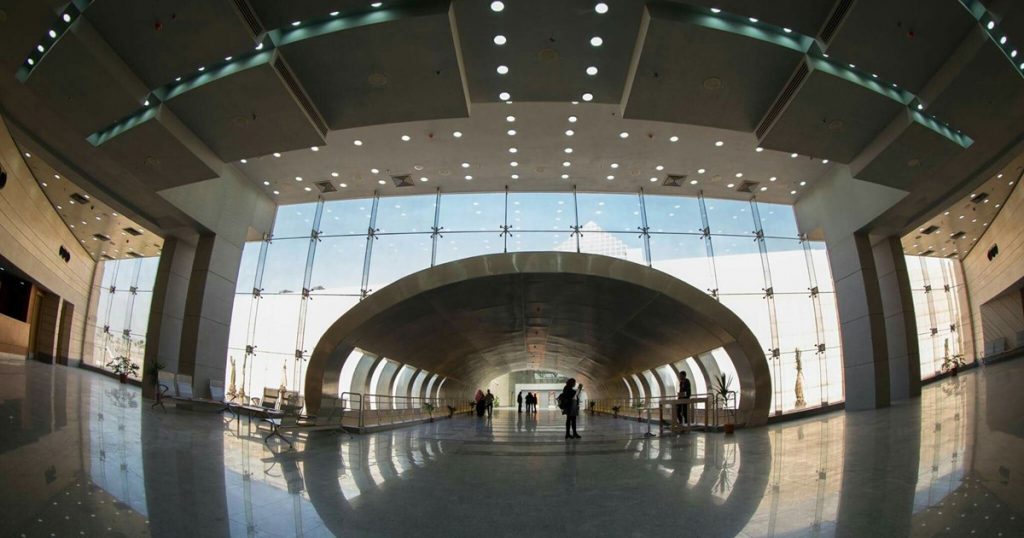
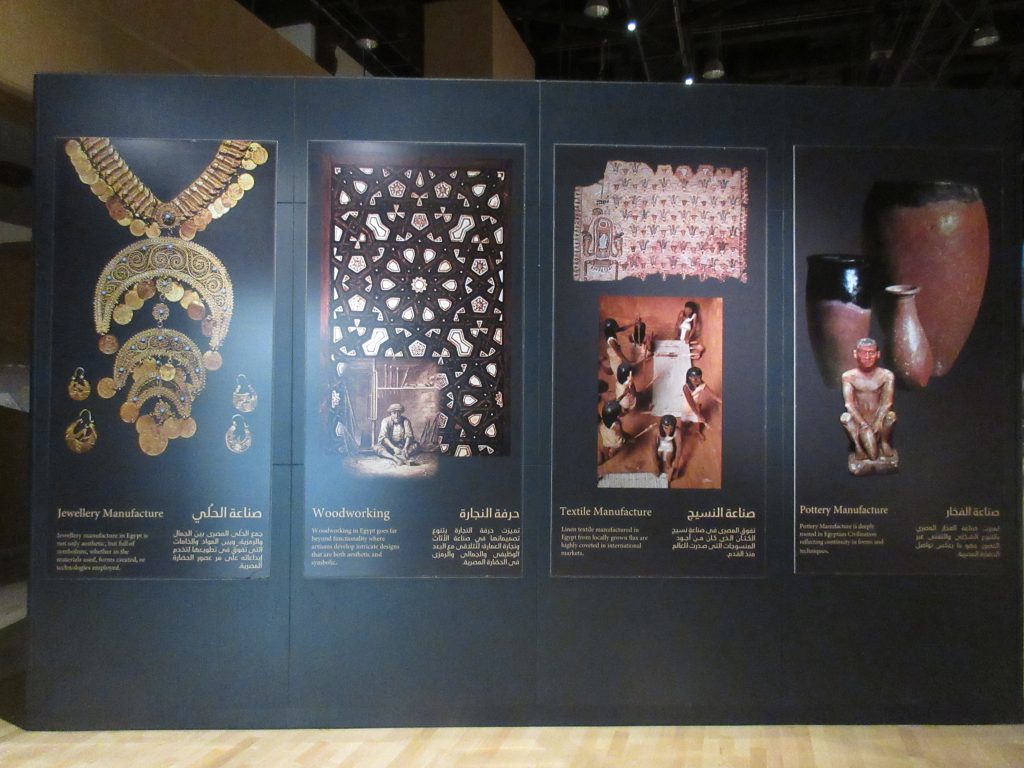
The museum partially opened in 2017, and will display a collection of 50.000 artifacts, presenting Egyptian Civilization from prehistoric times to the present day.
Ahmed Ghoneim, executive director of the NMEC, described the museum as “a lighthouse for culture and tourism in Egypt, the Arab world and Africa”
The main hall is about 2,000 square meters, while the total area of the museum is approximately 138,600 square meters and can accommodate 100,000 artifacts. Besides Pharaonic statues and objects, the main hall hosts a human skeleton dating back 35,000 years, the oldest artificial limb in history, which shows how ancient Egyptians advanced in medicine.
Inspired by a Canadian museum
Yes, it is the Museum of Civilization in Ottawa (Now the Canadian Museum of History) that is said to have been the inspiration for this magnificent museum that focuses less on the Pharaonic era and more on the arts and crafts of Egypt through time.
And incidentally, the Museum of Civilization in Ottawa is about to open this May 19 through August 29 a special exhibit called “Queens of Egypt”, available to tour in person with timed admissions https://www.historymuseum.ca/queens-of-egypt/
Museum Highlight: The Royal Mummies Hall
The royal mummies that arrived at the NMEC April 3 (after the great procession from the Museum in Tahrir) will be the highlight of the collection. Their new immersive display will replicate the experience of visiting them in the Valley of the Kings.
These mummies belonged to kings and queens of the 17th, 18th, 19th and 20th dynasties, dating back some 3,000 years. These comprise some of the most famous names in Egyptian history: Amenhotep III, Queen Tiye, Ramses the Great, Seti and Queen Hatshepsut. The Royal Mummies Hall now exhibits about 150 pieces, including the mummies as well as their coffins. For the first time, each mummy will be exhibited near the coffin where it was found – and with rich information about the royal person’s life and death.
The opening of the magnificent mummies hall on Sunday April 18 coincided with the International Day for Monuments and Sites, also known as the World Heritage Day.”
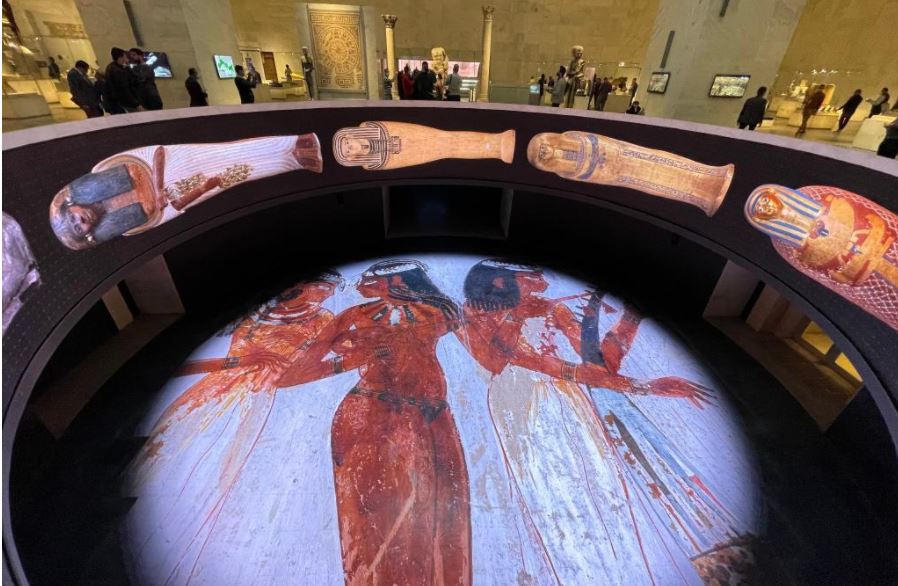
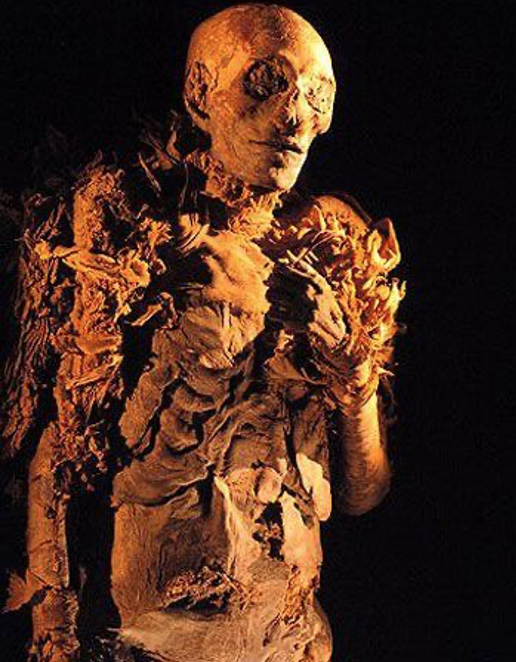

New mummy display at NMEC and Mummies of Hatshepsut and Seti 1, two of 22 royal mummies transported in April 2021 from the Egyptian Museum at Tahrir
3. The Grand Egyptian Museum – GEM
The World’s Greatest Archaeological Museum at the foot of the pyramids
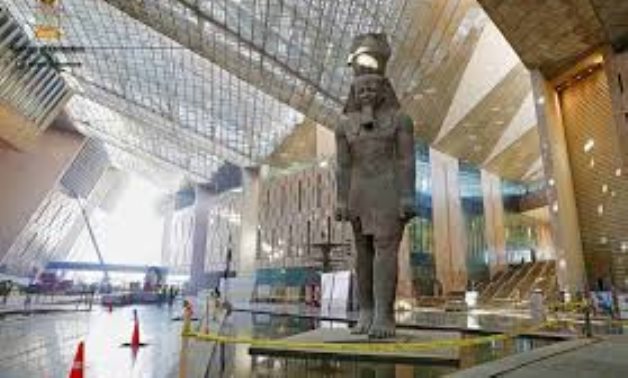
Soaring galleries up to 20 metres high… to display massive colossi never seen by the public. A great hanging obelisk of Ramses the II – the world’s first to be dangled from an exhibit hall. The 83 metre high Ramses statue rescued from downtown Cairo, an entrance centrepiece positioned so that the sun alights its grandeur twice a year during the equinox, a la Abu Simbel.
And… all 5600 pieces of Carter’s great Tutankhamun collection spread over a dedicated exhibition space measuring 7,000 metres. This will be the first time the complete Tut collection will be brought together, including some never before seen the light of day from dusty crates in the basement of Tahrir – and many having been painstakingly restored. The curators seek to not just display these pieces, but immerse the visitor in the life of Tut, showing the food he ate, the sports he played, the clothes he wore and the objects he used.
This state of the art museum, designed by Irish architecture firm Heneghan Peng sits at the edge of the Giza plateau, just 2 kilometres from the pyramids. Planned to be largest museum in the world dedicated to one civilization, the cultural complex will accommodate about 100,000 ancient artifacts, and will include 24,000m² of permanent exhibition space, a children’s museum, conference facilities, educational areas, a conservation center, and extensive gardens inside and around the museum’s plan.

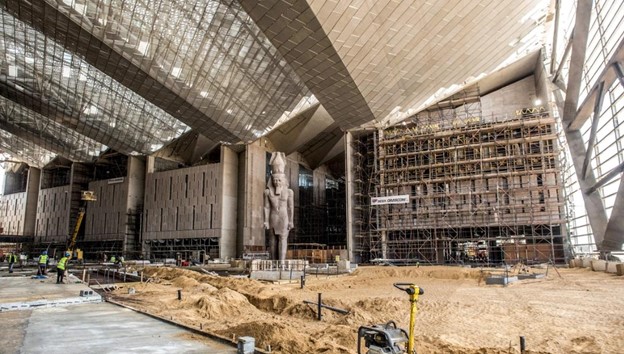
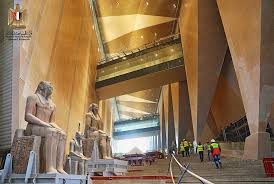
The pricetag? $1 billion dollars. The opening date? End of 2021, In sha allah
Museum highlights The Treasures of Tutankhamun
While the magnificent sprawling collection will embrace 5000 years of Egyptian history with iconic pieces from the Old, Middle, New and Late periods of Egypt, it will be the Tut collection that comprises the star attraction.
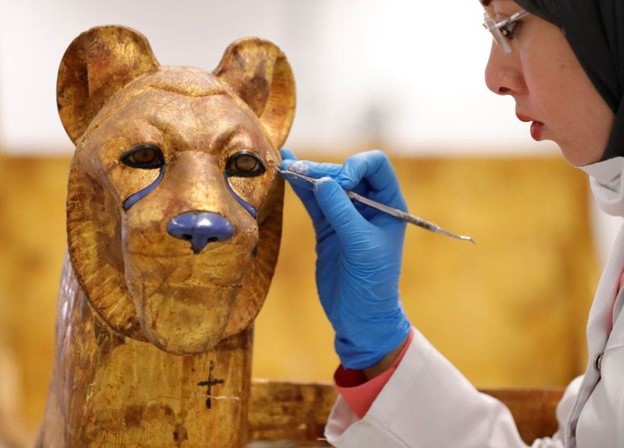

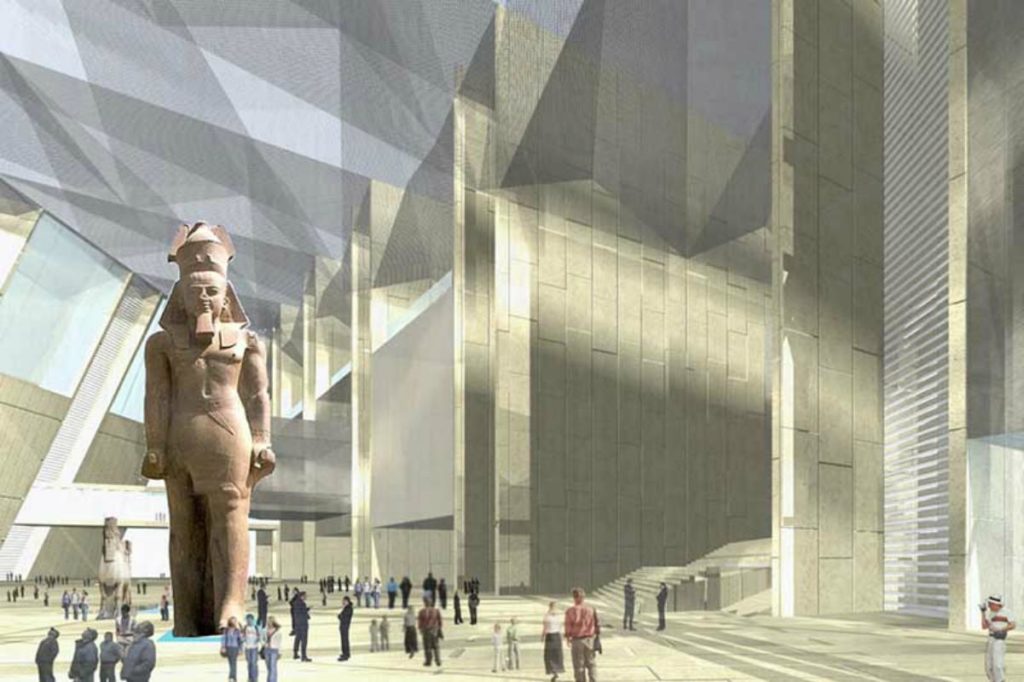
- To learn more about the GEM, read our previous blog here.
- Watch a short video on the GEM
Abundance of new finds: Three museums poised for influx of new exhibits
With a deluge of outstanding new coffins, mummies, statuary, and priceless artifacts tumbling out of the sand at Sakkara and Luxor over recent months (not to mention other sites in the Delta, Aswan and Middle Egypt), there will be no shortage of antiquities filling out these sprawling new collections at Cairo and Giza.
Anyone dubious as to whether there will be enough antiquities to fill three museums need only glance at the recent discovery news to see there are plenty of treasures to go around!
###
